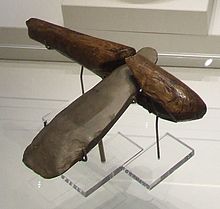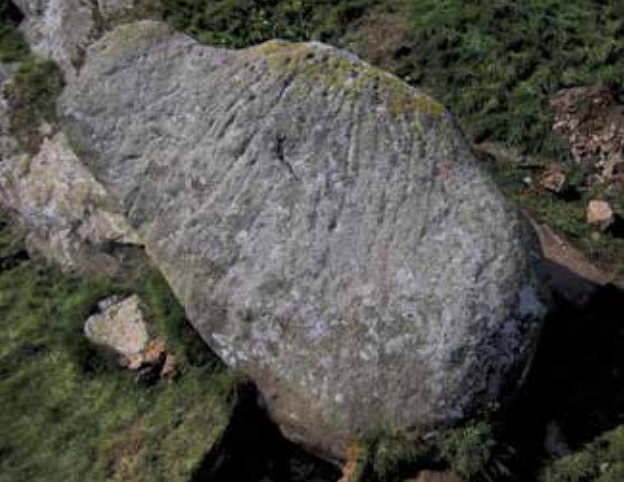In Current Archaeology 333 (December 2017) we learn that one third of Neolithic stone axes in Britain come from greenstone outcrops at the foot of Harrison Stickle and Pike of Stickle, two mountains overlooking the Langdale Valley in the Lake District. Ireland's equivalent are porcelanite outcrops on Teivebulliagh mountain in Co Antrim. One hundred Langdale axes have been found in Irelan d and 200 from Co Antrim have been found in various parts of Britain. Green stone axes were traded extensively. There are also 180 green jadeite axes found in Britain with a source in the Italian Alps. Obviously, these are the example that have come to light – and many more of them must have been in circulation. In one sense it seems to show an extensive Neolithic trade network between Britain, Ireland, and the continent, in the 4th and 3rd millenniums BC. Why the colour green was so important is rarely mentioned – except it may have attracted peoples eyes as it was different. Green is a colour with a lot of history as jade was prized in China and the green eyes of jaguars (in the night) were part of Meso-American mythology. Green is a colour of the auroral borealis – but green streaks in the sky are more commonly associated with meteors.

In Northern Earth 151 (December 2017) there is a piece about Hendraburnick Quoit in Cornwall, described as a curious jumble of rocks near the source of the river Camel. There are 17 cup marks on the capstone. This is a greenstone slab resting on a low platform of slates surrounded by a ring of water worn quartz boulders and smashed quartz fragments. The greenstone slab is axe shaped …
 … to the east there is another greenstone slab, described as a prostrate standing stone (one that has been knocked over). This menhir once stood in a socket 1m deep – and it too is covered with rock art. Also found at the site were Neolithic flints and a greenstone mace head. The piece is adapted from an article in the journal Time and Mind (10/3 p277-292).
… to the east there is another greenstone slab, described as a prostrate standing stone (one that has been knocked over). This menhir once stood in a socket 1m deep – and it too is covered with rock art. Also found at the site were Neolithic flints and a greenstone mace head. The piece is adapted from an article in the journal Time and Mind (10/3 p277-292).
